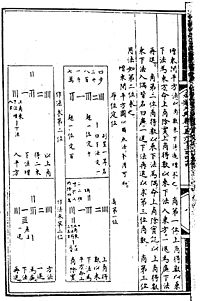Rod calculus

Rod calculus is a mathematical concept used to study how rods, which are long and thin objects, change their shape when they are squeezed or stretched. Imagine holding a stick or a pencil in your hand. If you try to bend it or squeeze it, you will notice that its shape changes. This is similar to what happens with rods in rod calculus.
To understand rod calculus better, let's start with some basics. Do you know what a slope is? It's the steepness of a line or a surface, and we measure it by looking at how much the line or surface rises or falls over a certain distance. For example, if you draw a line that goes up by 2 units and moves forward by 1 unit, then the slope of the line is 2/1 or 2.
Rod calculus is like measuring slopes, but instead of looking at lines or surfaces, we look at rods. When a rod is squeezed or stretched, its shape changes, and we can measure the slope of the rod at any point, just like we measure the slope of a line or surface. The slope of a rod tells us how much it is bending or twisting.
We can use rod calculus to study all kinds of rods, from the ones in our bodies (like bones and muscles) to the ones in buildings (like steel beams). By understanding how rods change their shape, we can design stronger and more efficient structures, and even figure out how to fix broken bones!
Overall, rod calculus is a way of understanding how long and thin objects like rods change their shape when they are squeezed or stretched, by measuring their slopes. It helps us design better structures and fix broken things, just like measuring slopes helps us understand lines and surfaces.
To understand rod calculus better, let's start with some basics. Do you know what a slope is? It's the steepness of a line or a surface, and we measure it by looking at how much the line or surface rises or falls over a certain distance. For example, if you draw a line that goes up by 2 units and moves forward by 1 unit, then the slope of the line is 2/1 or 2.
Rod calculus is like measuring slopes, but instead of looking at lines or surfaces, we look at rods. When a rod is squeezed or stretched, its shape changes, and we can measure the slope of the rod at any point, just like we measure the slope of a line or surface. The slope of a rod tells us how much it is bending or twisting.
We can use rod calculus to study all kinds of rods, from the ones in our bodies (like bones and muscles) to the ones in buildings (like steel beams). By understanding how rods change their shape, we can design stronger and more efficient structures, and even figure out how to fix broken bones!
Overall, rod calculus is a way of understanding how long and thin objects like rods change their shape when they are squeezed or stretched, by measuring their slopes. It helps us design better structures and fix broken things, just like measuring slopes helps us understand lines and surfaces.
Related topics others have asked about:
